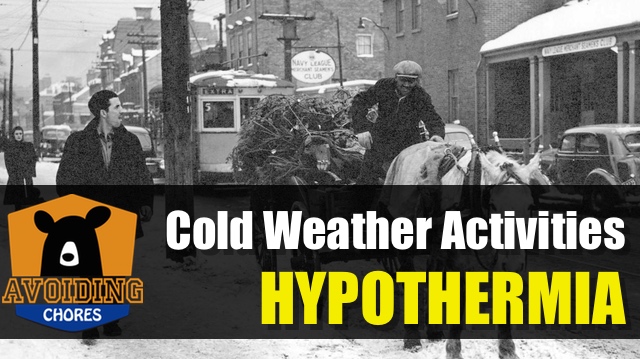Today, I just wanted to talk about Hypothermia and how we can avoid this condition by layering our clothes based on the outdoor activity we are doing.
First thing let’s talk about Hypothermia, which a lot of people who talk about layers, don’t spend much time explaining what hypothermia is. It is a very sneaky and dangerous condition to get while outdoors, proper planning and being aware of the symptoms is very important.
What Is Hypothermia
Hypothermia is is when outside environment affects our core body temperature where it drops by 1 or 2 degrees. There are 3 phases of hypothermia, but I’ll just just on the early stages since it’s something that we’ve probably have encountered but never knew it.
The tricky thing about these symptoms is that you may not be aware, so it’s yet another excuse to bring a buddy with us.
Early signs are uncontrollable shivers, the “umbles” (stumble, mumble, fumble) and lethargic. In which case you need to get warm now! One effective way is to get the internal heat generating by simply moving more, jumping jacks, running in place; ingest warm/hot liquids, remove wet layers and add warm layers.
The best place to see hypothermia in action unfortunately is to go to a running race (either a 10 mile or half marathon) in early spring or later fall. Out in my region, you see this all the time.
Why do I see this often? Well technically, hypothermia can occur whenever the environment is lower than your core temperature. We probably would have put on a sweater or turned up the heat in those situations. But some of the information published by search & rescue outfts seem to center around the 15C or below mark where our bodies can get in a hypothermic state quicker.
Clothing Layers to Combat Hypothermia
So how can we combat this? By wearing our clothing in layers and choosing the right pieces based on our activity.
But first, how can we lose body heat?
- Convection – Wind that blows away our body heat
- Conduction – When we are against a cold surface, like sleeping on cold ground.
- Evaporation – the cooling effect when we sweat or get wet.
- Radiation – We radiate heat, layers are used to trap that heat.
At this point, you’ve probably have seen or read about layers and what I wear generally works for me in my region. However, you may have different layering combinations in your region.
- Base Layer – skin tight layer meant to wick moisture away from you.
- Mid Layer – This layer is meant to insulate you. This is where you’ll be playing around with different thickness of fleece
- Outer layer – This is the layer that will protect us from wind and/or rain.
Cotton vs Wool vs Synthetic
I tend to mix & match wool & synthetic, but you’ve probably have seen or read about how cotton may not be the best fabric for extended outdoor outings. A couple of reasons for this:
- Cotton absorbs a lot of moisture – this is great when we’re doing the dishes or getting out of the shower, but ain’t that great when we’re outdoors.
- Cotton loses a lot of its insulating properties when wet, unlike wool where wool can maintain a good chunk of its insulating properties when wet.
Resources
- http://www.mayoclinic.org/diseases-conditions/hypothermia/basics/prevention/con-20020453
- http://www.wta.org/hiking-info/basics/how-to/how-to-avoid-prevent-and-recognize-hypothermia
- http://www.ussartf.org/hypothermia_cold_weather_injuries.htm

